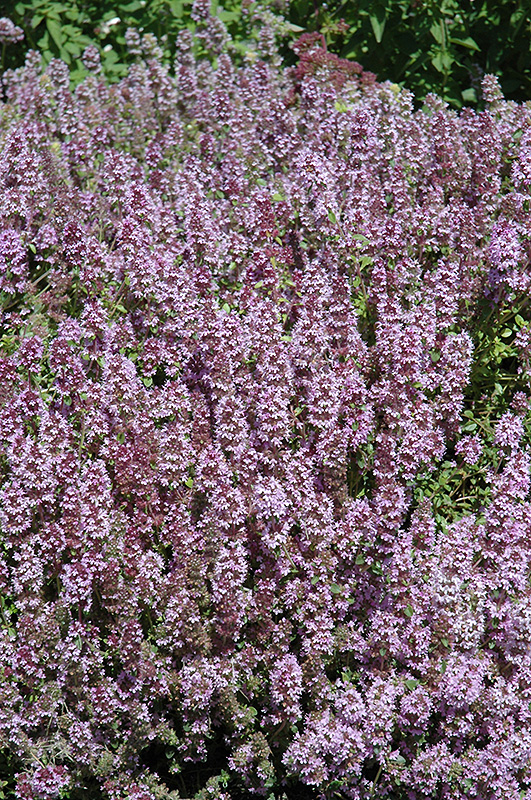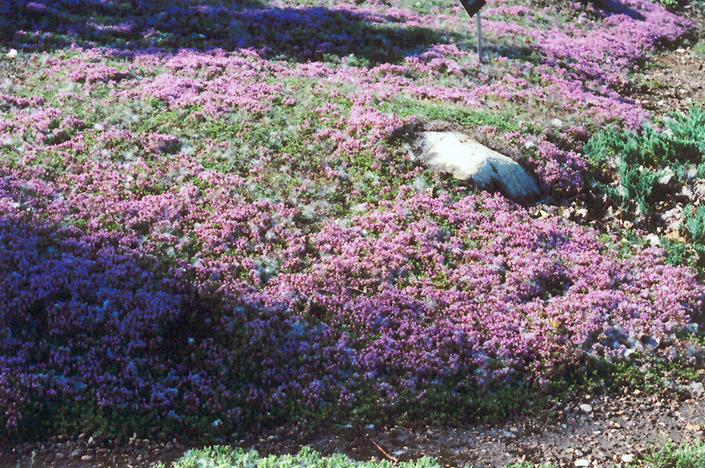Plant Finder
Plant Height: 4 inches
Flower Height: 6 inches
Spacing: 16 inches
Sunlight:
![]()
Hardiness Zone: 2a
Other Names: Creeping Thyme, Arctic Creeping Thyme
Description:
One of the finest of all groundcovers, forms a dense low mat which is completely covered in dusty pink flowers throughout summer, attractive fine and fragrant foliage the rest of the season; needs a dry and sunny location, will take light foot traffic
Ornamental Features
Mother-of-Thyme is smothered in stunning spikes of lilac purple flowers rising above the foliage from early to mid summer. Its attractive tiny fragrant round leaves remain dark green in color throughout the year.
Landscape Attributes
Mother-of-Thyme is a dense herbaceous evergreen perennial with a ground-hugging habit of growth. It brings an extremely fine and delicate texture to the garden composition and should be used to full effect.
This plant will require occasional maintenance and upkeep, and is best cleaned up in early spring before it resumes active growth for the season. Deer don't particularly care for this plant and will usually leave it alone in favor of tastier treats. Gardeners should be aware of the following characteristic(s) that may warrant special consideration;
- Spreading
Mother-of-Thyme is recommended for the following landscape applications;
- Rock/Alpine Gardens
- Border Edging
- General Garden Use
- Groundcover
- Herb Gardens
Planting & Growing
Mother-of-Thyme will grow to be only 4 inches tall at maturity extending to 6 inches tall with the flowers, with a spread of 18 inches. When grown in masses or used as a bedding plant, individual plants should be spaced approximately 16 inches apart. Its foliage tends to remain low and dense right to the ground. It grows at a fast rate, and under ideal conditions can be expected to live for approximately 10 years. As an evegreen perennial, this plant will typically keep its form and foliage year-round.
This plant should only be grown in full sunlight. It prefers to grow in average to dry locations, and dislikes excessive moisture. It is considered to be drought-tolerant, and thus makes an ideal choice for a low-water garden or xeriscape application. It is not particular as to soil type or pH. It is highly tolerant of urban pollution and will even thrive in inner city environments. Consider covering it with a thick layer of mulch in winter to protect it in exposed locations or colder microclimates. This species is not originally from North America. It can be propagated by division.





